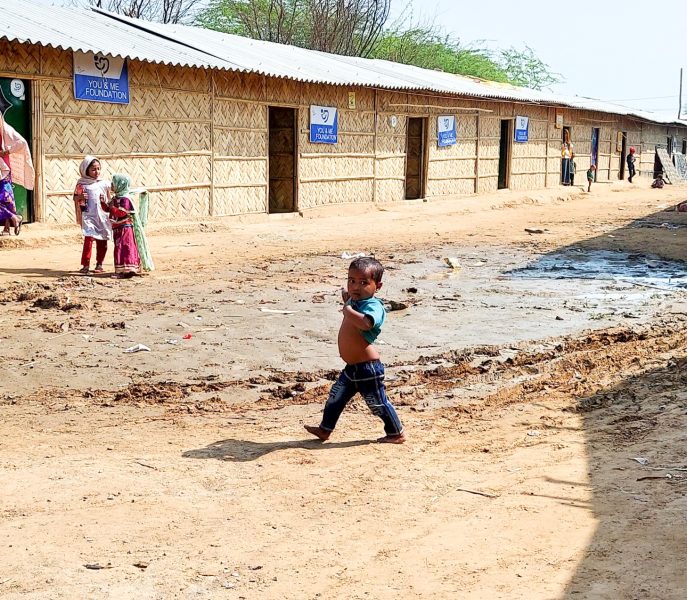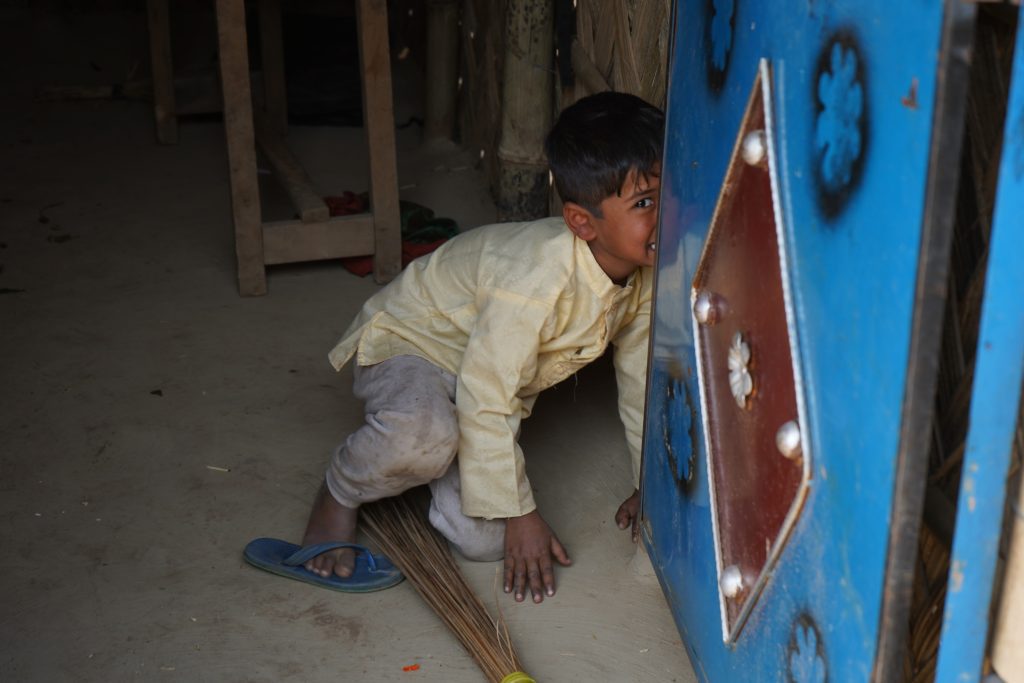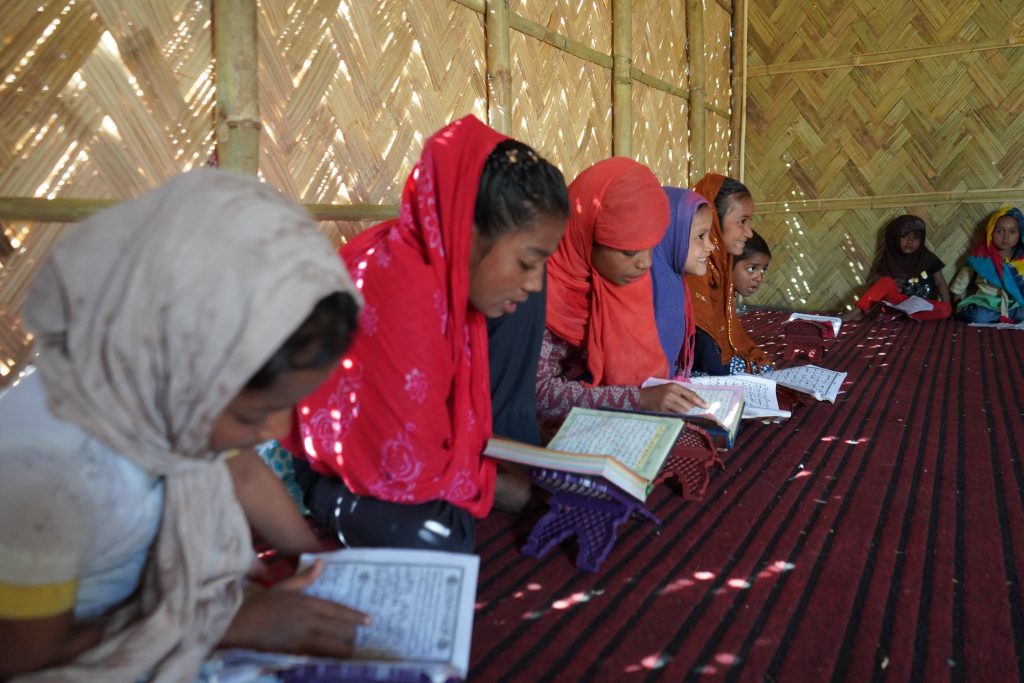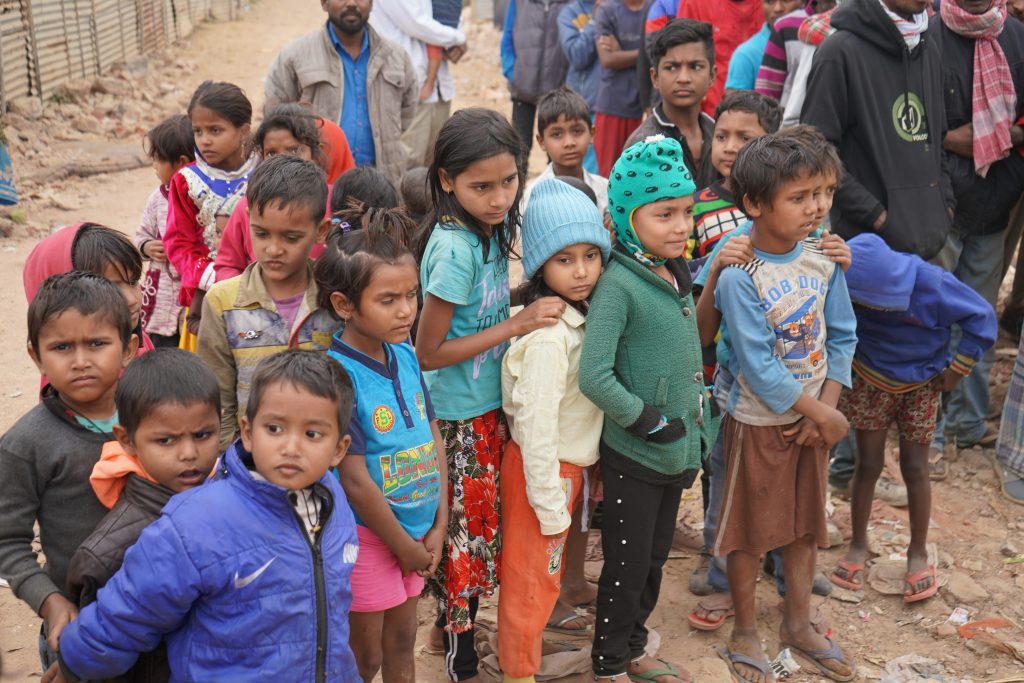
Rohingya children face a dark future without healthcare & education

On January 29, 2022, Yasmin Begum, who was a tailor back in the Rakhine state of Myanmar and currently living in a Rohingya camp based at Nuh district of Haryana state in India, gave birth to a boy in her small shanty made of tarpaulin, tin and wood. Yasmin claimed that the boy was born healthy and normal. But on February 14, when the entire world was celebrating Valentine’s Day, Yasmin lost her baby.
She said, “My baby was doing fine till February 13. On 14th, he was neither drinking milk nor responding. We took him to the government hospital, where he was declared dead. The reason given to us for the death is some germ infection. We followed all the important precautions after his birth, but he left us in just 16 days.”
Dr Govind Sharan, senior medical officer of Nuh’s Civil Hospital, said, “Yasmin’s son’s death was a neonatal death. He died of sepsis. Incidentally, this is not the first such death. Every month, two to three infants die due to sepsis and other infections in Rohingya camps. This happens due to lack of hygiene in the Rohingya camps.”
Seven-year-old Rizwan Hussain from Chandeni 2 Rohingya camp in Nuh is suffering from polio. Kamal Hussain, his father, who was a construction worker back in Myanmar and is currently selling vegetables in India, said, “We came to India in 2012. Rizwan was born in 2014. He was healthy when he was born. His weight was also normal, but as he grew up, he developed polio.”

Apparently, India was declared polio free in the same year when Rizwan was born. India rolled out the Pulse Polio Immunization Programme on October 2, 1994, when the country accounted for around 60 per cent of the global polio cases. Within two decades, India received ‘Polio-free certification’ from World Health Organisation on March 27, 2014, with the last polio case being reported in Howrah in West Bengal on January 13, 2011.
Kamal said, “No one from the Indian government or medical institutes came to us to provide polio drops for our children. We also were not aware of any vaccination and polio drops programme for children. We were so busy saving our lives and settling in India that we lost all track of vaccinating our children due to which they are now suffering from many health issues. Not only my child but there are also many children in our camps who are suffering from different diseases.”
Also read: In Bengaluru, struggling Rohingya refugees face threat from Bangladeshis
Since August 2017, extreme violence in Rakhine State, Myanmar, has displaced 706,000 Rohingya refugees, including 381,240 children, (i.e., 55 per cent were children). In India, Rohingyas are spread across the country, with over 40,000 living in shanties and slum settlements. Of the Rohingyas living in Hyderabad, Delhi-NCR, Rajasthan, Haryana, Uttar Pradesh and Jammu, only 17,500 are registered at the UNHCR offices in Delhi and have been issued a refugee card.
In India as well, more than 50 per cent of Rohingya are children. In Haryana and Delhi, there are nearly 1,500 families of Rohingya settled and every family has at least two infants and one person below the age of 18, claimed Jamal Hussain, a Rohingya leader in Nuh and a learned teacher of Islamic law. He added, “The children who left Myanmar and who were born here, is a generation wasted. They saw their parents fleeing their country to save lives and living in bad conditions. Their health is bad, both mental and physical.”
Dr Sharan said, “Due to lack of adequate nutrition, vaccination of the infectious diseases, overcrowding, inadequate sanitary system, and lack of access to pure drinking water infectious diseases are highly prevalent among these refugee children. These Rohingya children witnessed one of the world’s biggest diphtheria outbreaks.”
He added, “Acute respiratory infections and diarrhoea among children are alarmingly spreading making the treatment of the diseases daunting. Younger Rohingya children are highly vitamin deficient. They have immunity gaps ranging from normal communicable diseases like flu to serious diseases like polio, hepatitis, measles and even COVID-19. An immunisation campaign is strictly needed in Rohingya camps.”

No access to Education
Despite the United Nations Convention on the Rights of the Child, irrespective of nationality, faith or ethnicity, the majority of Rohingya children continue to be deprived of any formal education in India. There are massive gaps in providing for their welfare, including the lack of formal, basic education for the children.
In Haryana’s camps, not a single Rohingya child is admitted to the school. Arshi (16), who goes by her first name and lives in a Rohingya camp in Nuh, said, “I took my primary education in Rakhine state. After we came here in 2017, I have not attended a single day in school. I want to study, but where, we don’t know.”
Monora Begum, Arshi’s mother and a housewife, said, “We want our children to study but there are no schools here who will give them admissions. We tried admitting our children in a government school, but they said that they have received no notification from the government to admit refugee children in schools.”
Also read: Rohingyas detained in Jammu can be deported by following due process: SC
Abdul Rehman, Elementary Education Officer, Nuh, said, “The Rohingyas in the country are still subjected to displacement. The Indian courts and the government have voted against them for staying in India. We can’t give admission without any proper notification from the government advocating their education.”
Not only in India but Rohingya children are also deprived of future opportunities in other countries like Bangladesh, Thailand, Malaysia and Indonesia. Rohingya children cannot reach their full potential and are instead condemned to further cycles of discrimination, alienation, marginalisation and exclusion, said non-government organisation Save the Children.

Mohammad Younis, who was a maulvi in Myanmar and is on the same role in Nuh, said, “Indian government is not teaching our children. So we took that responsibility into our hands. We teach the children so that they know the basics of everything and how to live a life. There are nearly 30 students from Chandeni camp who come to me for education. Apart from language, I teach them Islamic laws and preachings.”
Government against aid
Forget about health and education, the Indian government is very vocal about deporting Rohingya back to Myanmar. Haryana home minister Anil Vij had said, “We are collecting information about Rohingya staying in Nuh. Action will be taken accordingly. After all, India is not a dharamshala (an inn or small hotel) where anybody can stay where they like. We will look into the deportation of Rohingya back to their country.”
India home minister Amit Shah also said, “Rohingya Muslims would never be granted Indian citizenship. They will not be accepted and deported back to their country soon.” The Supreme Court of India also ruled for the deportation of Rohingyas. Though the court agreed that the Rohingyas face a threat to life in their home country, it nevertheless decided to deport them.
India is committed to the United Nations Sustainable Development Goals and is a signatory to the Universal Declaration of Human Rights, which states that everyone has the right to the highest standards of physical and mental health. The 1951 Refugee Convention emphasises that refugees should enjoy access to health services equivalent to that of the host population.
India has signed neither the 1951 United Nations Refugee Convention nor its 1967 Protocol and, with the exception of the Foreigner’s Act of 1946, India lacks a legal or policy framework for the treatment of refugees. Irrespective of the high demands of a burgeoning population of 1.2 billion citizens, India has graciously accommodated refugees and illegal immigrants, whether from Sri Lanka, Iran, Bangladesh, Pakistan, Afghanistan or Tibet, into its fold.
However, this largesse and attitude of acceptance are coming under question now. In its reply to a petition filed in the Supreme Court against deportation of Rohingya refugees, the Centre has stated that “India can’t become the refugee capital of the world”. In addition, a three-judge bench of the Supreme Court denied an interim order on a plea filed to ensure education and health facilities to the foreign settlers.
“The status of the Rohingya refugees in India remains in a state of limbo with their health condition left to small mercies of international agencies and the vagaries of nature. Deprived of safe food and water and with nowhere to turn, the plight of the stateless and forsaken Rohingyas is truly tragic”, said Shaheeda Kirtane from Observer Research Foundation.
She added, “The only question that now remains is when will the Government of India finally work on addressing the Rohingya situation in the country? Ultimately, the long-term wellbeing of the Rohingya refugees will only be guaranteed when the root cause of the conflict –their reason for fleeing their homeland – is resolved.”
Sabber Kyaw Min, co-founder of Rohingya Human Rights Initiative, said, “Rohingya are dying naturally due to international failure. One day, the community will vanish from the globe. As a refugee, one can not pressurise any government. The same is the case with India.”
Moreover Kyaw Min added, “Rohingya have to deal with political persecution. Indian media and the public are denying Rohingya. There is a lot of hate against them. But we still believe in the Indian constitution. Article 21 of the Indian constitution gives the right to life and education. In Myanmar, Rohingya would have been dead by now, at least they are alive in India.”

